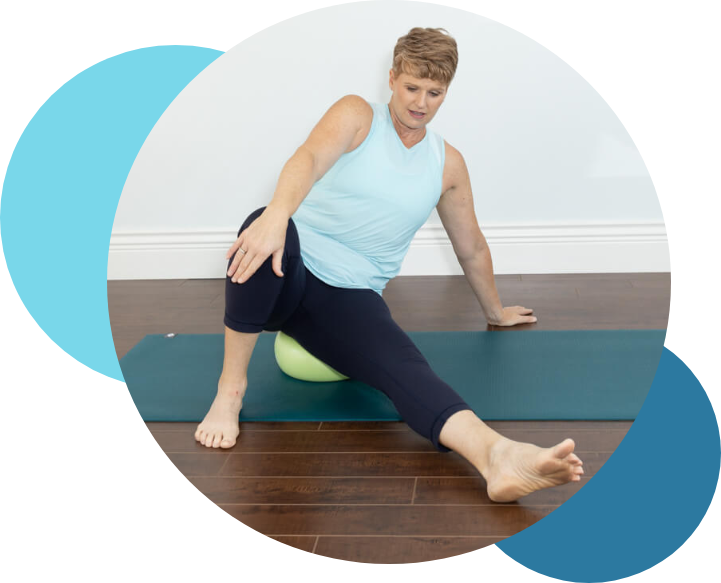Pelvic floor therapy is a specialized treatment focusing on the muscle groups in and around the pelvis. Each case is different, and the best treatment specialists will tailor each recovery plan to each individual patient. Much of the time however, the treatment will involve muscle retraining, recommendations for lifestyle changes, and advice on potential bladder irritants and at-home exercises. I do not perform internal Pelvic Floor exams, but can work with you after you’ve seen an internal Pelvic Floor therapist to help progress your program to include more functional activities.
Patients are usually referred to pelvic floor therapy by a medical practitioner, but some people choose to take matters into their own hands when they notice certain issues or body changes cropping up in their health. Pelvic floor therapy is useful for males and females, and is often recommended for people experiencing the following issues:
In short, there are countless roles that the pelvic floor plays in our overall physical condition, and therefore countless reasons to keep it as healthy as possible.

To best understand how my customized pelvic floor physiotherapy service works, we need to take a good look at our bodies and how they function first. The human body is quite the system, with countless processes—blood circulation, the nervous system, our muscles, digestion, and many, many more—working at all times to keep everything running smoothly.
Structurally, we need our bones and spine to take the force load of gravity pushing down on us daily. Good posture entails stacking our head over our ribcage, the ribcage is stacked over the pelvis and the pelvis balanced over our feet or base of support. This allows the spine and long bones of the body to take the load, allowing our muscles to do their job to just move us, instead of trying to hold us up against gravity which is how muscles can get tight and overworked. With pelvic floor therapy, we ensure that your optimal postures will allow for improved diaphragm function, and for the core and pelvic floor muscles to move and activate with the appropriate timing and tension to help dissipate any abdominal pressures that can lead to pelvic floor issues.
What we think of as the pelvis is actually an intricately connected set of muscles, connective tissues, and bones that come together to bear the load of our bodies. The pelvis’ bowl shape allows the weight of our bodies to be supported by the legs when standing, and by the hips and glutes when sitting, providing vital strength and stability. In the center of the pelvic bowl is another extremely important part: the pelvic floor. This ‘floor’ is made up of elastic muscle and connective tissue, and serves many purposes, including:
When you come into ProActive Pilates in need of external pelvic floor therapy, the process always begins with an in-depth consultation. I sit down with each and every client to understand their current issues, their medical history, and their health goals for the future. From here, I assess your current physical state, by paying attention to certain areas of the body such as your breath, ribcage positioning, the low back and hips, as well as taking note of your overall posture, while standing, walking, and sitting. All of this gives me an idea of how to best approach your therapy.
Once the assessment is complete, we work together to develop a detailed treatment plan. Sometimes pelvic floor weakness is the issue so we work together on strengthening, and other times the pelvic floor and hip rotator muscles are too tight, causing issues, so we work together on relaxing or releasing the muscles involved. We decide which exercises and routines will be most beneficial for our time working together, and what you can do at home to further improve your pelvic floor health.
With over twenty years of experience in physical therapy of all kinds, I’ve learned that health issues surrounding the pelvic floor can be particularly sensitive or triggering, difficult to confront, and for some, embarrassing. That’s why I always strive to make my clients feel as comfortable and confident as possible from the outset, so that they can get back to feeling their best, both emotionally and physically.
Pelvic health issues don’t define you as a person, but it can be difficult to focus on anything else when dealing with such all-encompassing problems.
I’m here to help get back to normal, and take your physical health into your own hands. And of course, as I am a physiotherapist, I provide a physiotherapy receipt to clients for each session, so you may be reimbursed by your extended benefit plan; please check with your specific benefit plan for eligibility.
If you have more questions about pelvic floor therapy or the benefits of good pelvic health, contact me today. Or if you’re looking to set up an initial consultation and start getting some answers for your particular situation, book your assessment online by clicking the button below.

© 2024, ProActive Pilates. All Rights Reserved. Designed by KIAI Agency